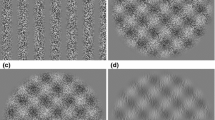Abstract
Stepping down at a change of height is a fundamental part of human locomotion. At a novel step, this requires the transformation of visual information about a depth change into a stepping movement of appropriate size. However, little is known about this process or its development. We studied adults, 3- and 4-year-old children stepping down a single stair of variable height. We assessed how well stepping down was scaled to stair height using several kinematic measures. Of these, ‘kneedrop’ and ‘toedrop’ describe how far the leg has descended by the time it begins to ‘swing in’ in preparation for landing; and ‘toeheight (speedpeak)’ describes where the toe begins to decelerate. If visually controlled, their values should scale to the height of the stair. Under normal visual conditions, children scaled these movements to stair height as well as adults. In a second condition, participants closed their eyes just before stepping down to remove visual feedback during the step. Adults’ steps were barely affected. For 4-year olds, only toeheight (speedpeak) decreased. For 3-year olds, both toedrop and toeheight (speedpeak) scaled less well to stair height than normal. The results suggest that visuomotor processes for fine-tuned stepping control develop remarkably early, but are initially dependent on visual feedback.



Similar content being viewed by others
References
Adolph KE (1995) A psychophysical assessment of Toddlers’ ability to cope with slopes. J Exp Psychol Hum Percept Perform 21:734–750
Berger SE, Theuring C, Adolph KE (2007) How and when infants learn to climb stairs. Infant Behav Dev 30:36–49
Buckley JG, MacLellan MJ, Tucker MW, Scally AJ, Bennett SJ (2008) Visual guidance of landing behaviour when stepping down to a new level. Exp Brain Res 184:223–232
Cesari P, Formenti F, Olivato P (2003) A common perceptual parameter for stair climbing for children, young and old adults. Hum Mov Sci 22:111–124
Cowie D, Braddick O, Atkinson J (2008) Visual control of action in step descent. Exp Brain Res 186:343–348
Craik RL, Cozzens BA, Freedman W (1982) The role of sensory conflict on stair descent performance in humans. Exp Brain Res 45:399–409
DeLoache JS, Uttal DH, Rosengren KS (2004) Scale errors offer evidence for a perception–action dissociation early in life. Science 304:1027–1029
Gibson EJ, Walk RD (1960) The “Visual Cliff”. Sci Am 202:64–71
Institute for Perception TNO (1972) TNO test for stereoscopic vision. Laméris, Utrecht
Johnson DC, Wade MG (2007) Judgment of action capabilities in children at risk for developmental coordination disorder. Disabil Rehabil 29:33–45
Knobloch H, Stevens F, Malone AF (1980) Manual of developmental diagnoses. Harper & Row, New York
Nahorniak MT, Gorton GE, Gannotti ME, Masso PD (1999) Kinematic compensations as children reciprocally ascend and descend stairs with unilateral and bilateral solid AFOs. Gait Posture 9:199–206
Parker J et al (2008) Cerebellar growth and behavioural & neuropsychological outcome in preterm adolescents. Brain 131:1344–1351
Santello M (2005) Review of motor control mechanisms underlying impact absorption from falls. Gait Posture 21:85–94
Shumway-Cook A, Woollacott MH (1985) The growth of stability: postural control from a development perspective. J Mot Behav 17:131–147
Timmis MA, Bennett SJ, Buckley JG (2009) Visuomotor control of step descent: evidence of specialised role of the lower visual field. Exp Brain Res 195:219–227
Ulrich BD, Thelen E, Niles D (1990) Perceptual determinants of action: stair-climbing choices of infants and toddlers. In: Clark J, Humphrey J (eds) Advances in motor development research, vol 3. AMS Press, New York
Wolpert DM, Miall RC, Kawato M (1998) Internal models in the cerebellum. Trends Cogn Sci 2:338–347
Acknowledgments
This work was funded by a Medical Research Council PhD studentship to DC and Grant (G7908507). Thanks to all participants, Steven Hollens-Riley for help with data collection and analysis, and two anonymous reviewers for their comments.
Author information
Authors and Affiliations
Corresponding author
Rights and permissions
About this article
Cite this article
Cowie, D., Atkinson, J. & Braddick, O. Development of visual control in stepping down. Exp Brain Res 202, 181–188 (2010). https://doi.org/10.1007/s00221-009-2125-6
Received:
Accepted:
Published:
Issue Date:
DOI: https://doi.org/10.1007/s00221-009-2125-6




